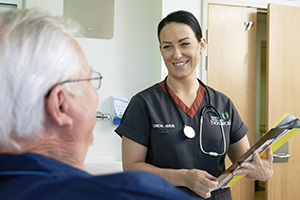Preventing healthcare associated infections

Understanding healthcare associated infections
Infections patients may get while being cared for in a healthcare facility are known as healthcare-associated infections (HAI) and commonly include:
- urinary tract infections (UTI)
- pneumonia (lung infection)
- wound infections
- bloodstream infections.
For a patient, a HAI can result in:
- illness
- an extended or additional stay in hospital
- a slower recovery
- increased stress
- lower morale.
Read more about HAIs and how you can help prevent them (Healthy WA)
Our commitment to reducing HAIs
SMHS is committed to minimising the risk of patients acquiring preventable infections and enabling the effective management of infections when they occur.
HAIs are costly to patients, hospitals and the community. While they can occur in any healthcare setting, effective infection prevention and control can significantly reduce the infection rate. Patients, visitors and staff all play a role in reducing HAIs.

